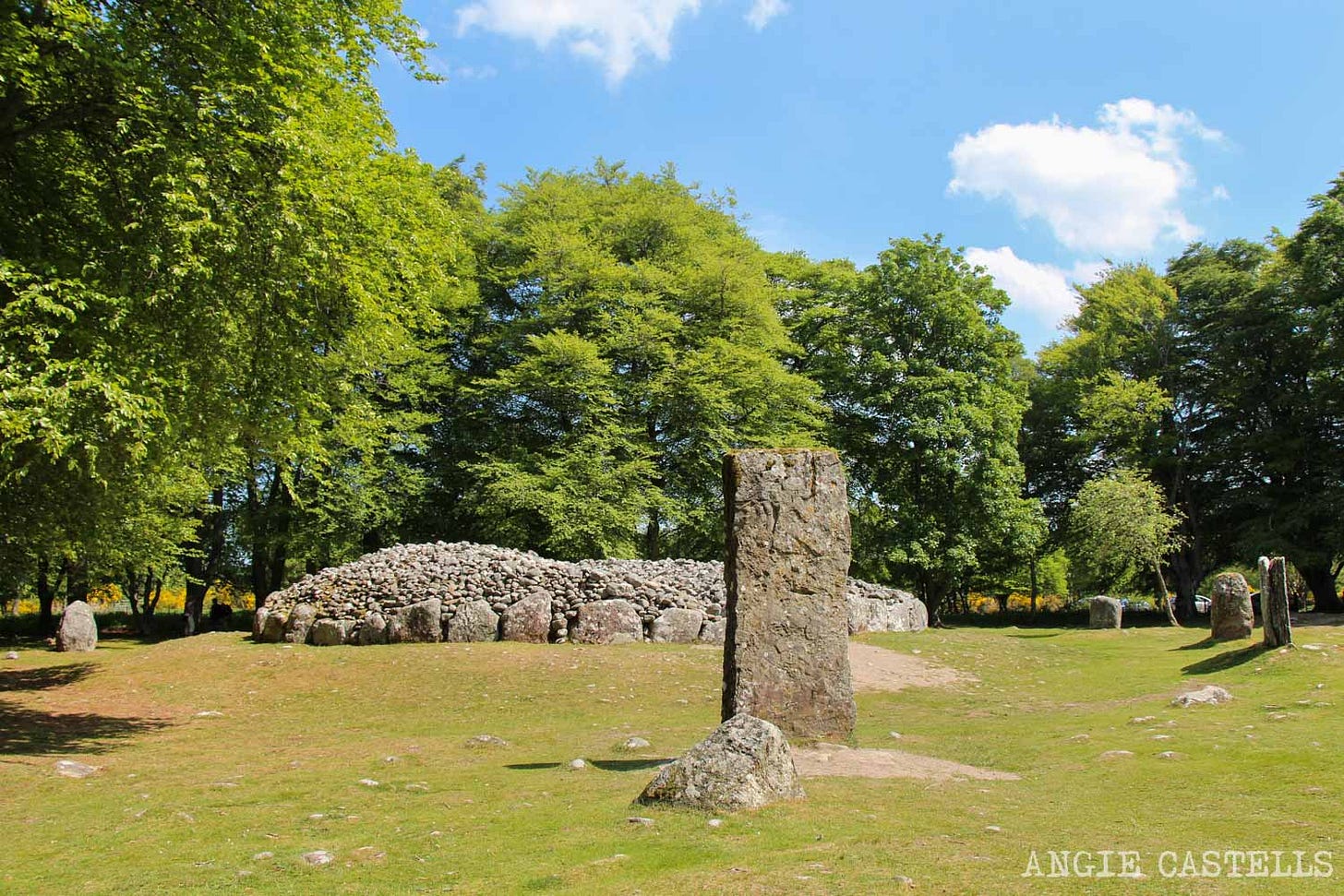I did not anticipate the extraordinary, rugged, and otherworldly beauty of the Outer Hebrides islands of Scotland. Wild Atlantic waves, world-renowned powder white beaches, Neolithic stone structures, and the Gaelic language leave the impression of a land less touched by modernity, where the past deeply penetrates those living there today.
This chain of 70 islands (only 15 are inhabited) lies west of mainland Scotland. Of the 27,000 inhabitants of all the islands, 21,000 live on Lewis and Harris, which is a single island.
The beautiful landscapes rest on bedrock that is among the oldest in Europe, formed three billion years ago. Although political ownership of these lands has changed over the centuries, everyday life remained under the control of the same powerful family clans, such as the MacLeods, MacNeils, and MacDonalds.
After spending time in the landscapes of Harris, I understood why ancient myths continue to be appreciated to this day. These are places where you can viscerally experience mystery and timelessness. Here, you experience the divine without needing to believe in a god.
A popular mythical figure in the coastal regions of Scotland and Ireland is the Selkie. Part seal and part human, they transform on land by shedding their seal skin. Selkie stories symbolize the fluid nature of identity, freedom, and captivity. There are many versions of the Selkie story, but most serve as cautionary tales of the cost of living inauthentically. These stories never end well.
There are both male and female selkies, but the archetype of a beautiful woman Selkie capturing hearts continues to stoke the modern creative imagination in Scotland and beyond. Films like Ondine and The Secret of Roan Inish are examples of atmospheric films steeped in folklore and featuring the Selkie heritage.
A popular version of the Selkie story is that a fisherman sees a Selkie as a beautiful woman bathing on a rock and falls in love at first sight. He steals her skin so that she is forced to remain human and cannot leave him. In captivity and longing for the sea, she eventually finds where the fisherman has hidden her seal skin and returns to the sea. The tragedy is that her liberation leaves behind heartache, not only for the fisherman who held her captive, but also for the children she left behind.
Before leaving for the trip, I asked my sisters, Teresa and Michelle, if they would be interested in holding a ceremony to reflect our desire and hopes for the future. They readily agreed. A ceremony is a way to mark with intention the kind of world we wish to see and to hone our energy towards participating in it. We would create a circle for the ceremony, which for eons has been used in cultures and traditions to symbolize cycles of life, connection to the divine, and unity.
Circle ceremonies start with clearing a space where energy is contained and protected. Preparing the space often includes some version of calling upon the four directions and their associated elements–North/Earth, East/Air, South/Fire, and West/Water. Before leaving for Scotland, Jenny Rose Marie Serna, a Latina curandera or traditional plant healer, gifted me some tobacco mixed with herbs from her farm and candles for my sisters and I. In parting, she offered that the most important aspect of the ceremony is to speak from the heart.
I did some research on the Celtic goddesses that predated the Gaelic language. Unlike Western religions, the ancient Celts had a pantheon of deities, each linked to aspects of life and the natural world. For example, the goddess Brigid embodies fertility, wisdom, and creative inspiration. She is the goddess of healing, community, and justice. Cerridwen is the goddess of the Moon and represents rebirth, transformation, and inspiration. And Morrigan, called the Great Queen, protected humans from ill will and attacks. It seemed fitting to call in the symbolism of these goddesses in our ritual taking place on the wild coast of Scotland.
Before taking the ferry to the Outer Hebrides, we spent a couple of nights in the highland city of Inverness. My sister Michelle wanted to visit Balnuaran of Clava, a Bronze Age cemetery important for burial and ritual activities. The site has cairns with a central chamber, and standing stones surround each cairn. Other cairns that are not accessible to the public are located nearby.
Michelle had heard that the veil is thin at this ancient burial site and suggested that this would be a good place to hold our ceremony. The veil is a metaphor for the separation between the physical and spiritual worlds. The concept of a thin veil goes back to Celtic festivals when it was believed that the boundary between this world and others was blurred—the world of ancestors and the present. The veil is also between the present-day world and the world yet to come.
It was fortuitous timing for this ritual, as it fell just before Samhain, a Gaelic festival near harvest time. At this festival, the thinning of the veil is thought to occur because of the dying of the season. In the fall, it is time to quiet down and tune into our higher selves and the divine.
Balnuaran of Clava is set within a small wood, and there we found a clearing of trees that was a perfect spot for our ceremony. We took turns speaking from our hearts, focusing on our vision for Kamala Harris winning the election and offering the kind of leadership where individual and communal efforts toward connection, equity, and justice can take root. We left the site happy to have shared the ritual in this special place.
I imagined I would enjoy Scotland, a country I had wanted to visit for years. What I could not anticipate was the deeper connection I felt to this place that can't be explained. It is a place to which I will return.









